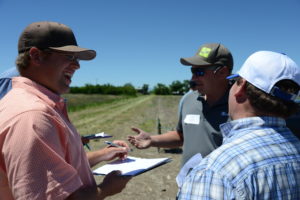New York Dairy Farmer Thanks Crop Insurance
Dairy farmer Steve Durfee milks about 1,000 cows at his farm in upstate New York. It’s a family operation, started by Durfee’s grandparents in the 1940s after they lost everything during the Dust Bowl in Nebraska and moved east to start again.
Now, if anything were to happen on Durfee’s farm, he has peace of mind knowing that his crop insurance policy will help protect his family and give them the opportunity to rebound.
Durfee shared his experience with crop insurance in a recent guest column he wrote for the Madison County Courier:
When I think back to the challenges my grandparents faced as they packed up and left Nebraska, it reminds me just how much farming has changed. I think they’d be surprised and pleased at how successful our family farm has become.
We wouldn’t have been as successful without a strong farm safety net. The centerpiece of that safety net is the public-private partnership of crop insurance.
I recently invited representatives from the crop insurance industry to my farm to tell my story and show them how we use crop insurance to manage the weather and price risks that, for my grandparents, were nearly unmanageable.
The large investment required for each acre we plant makes crop insurance a must. Buying insurance helps take out some of the risk on those acres.
As Durfee notes, farmers would rather sell their products on the market than file an insurance claim. Thankfully, crop insurance helps America’s farmers and ranchers pick up the pieces when disaster strikes, ensuring they can continue providing our nation with food, fuel and fiber.
He concluded his column by urging Congress to keep families like his in mind as they discuss protecting and strengthening farm policy.
I’d like to thank Congress and the American public for backing a strong system of crop insurance in the Farm Bill. As the political cycle heats up and we head toward the 2020 elections, I hope policymakers will remember just how important crop insurance has become to rural America.
Find more first-hand stories highlighting the importance of crop insurance at CropInsuranceinAmerica.org.









